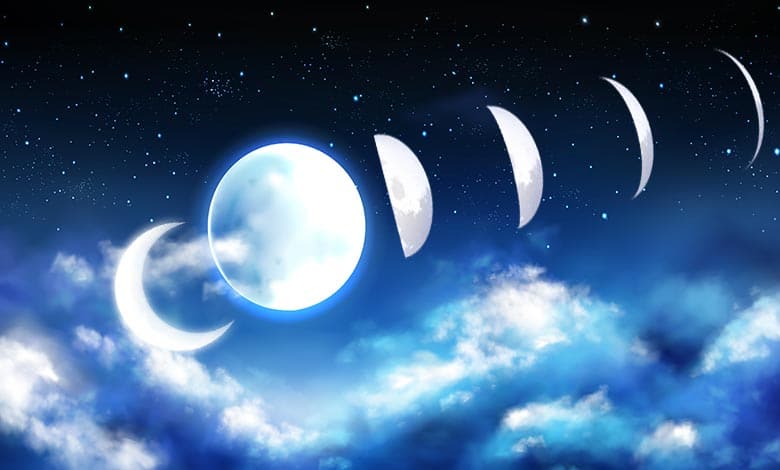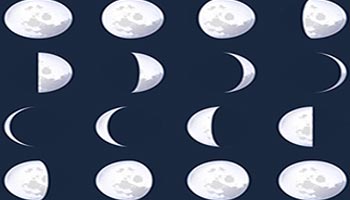
Hey there, moon gazers and sky watchers! Ever found yourself staring up at the night sky, mesmerized by a Moon that seems larger and more luminous than ever before? You’re not alone! We’re embarking on a celestial adventure to uncover the secrets behind this lunar illusion. Whether hanging low on the horizon or shining brightly above, the Moon has a way of captivating us with its changing size and splendor.
The moon’s orbit around the Earth is not a perfect circle. The supermoon is about 17% larger than an average full moon and about 30% brighter, but only happens yearly. So what’s going on? Your brain is trying to determine how the moon is situated in physical space. It’s constantly mapping out where things concern us so we can move through the world. To do that, it uses different visual cues, like vanishing points and shadows.
Scientists believe that our brains have evolved under the assumption that light usually comes from above us. Our brains perceive the night sky as projected on a dome, similar to a planetarium. A big moon, small moon, or half-moon are only illusions of the eye and brain.
Grab your telescope (or just your natural curiosity), and let’s dive into the fascinating science that explains why the Moon sometimes appears so grand and majestic in our sky. Ready for a journey to the stars? Let’s illuminate the night!
Why does the moon look so big?
The Moon can sometimes appear larger near the horizon than higher in the sky. This phenomenon is often referred to as the “Moon illusion.” While the Moon’s actual size remains constant, several factors contribute to the perception of a larger Moon:
Relative Size Comparison: When the Moon is near the horizon, there are objects in the foreground, such as trees, buildings, or mountains, that provide reference points for size comparison. The brain uses these objects to judge the size of the Moon. Since the Moon appears closer to these objects on the horizon, it seems larger in comparison.
Angular Size Constancy: Our brains perceive objects as having a constant size, regardless of their distance from us. When the Moon is on the horizon, it is seen against the vast expanse of the sky, which makes it appear larger due to the contrast with the surrounding space. Our brain interprets the Moon as farther away and compensates by making it seem larger.
Atmospheric Refraction: The Earth’s atmosphere can act as a magnifying lens, especially when the Moon is near the horizon. The atmosphere refracts or bends the Moon’s light as it passes through different layers, causing the Moon to appear slightly larger.
The Moon illusion has puzzled people for thousands of years. Indeed, the moon does get larger and smaller in angular size. It can change by up to 13% in diameter because its elliptical orbit takes it closer or farther from the Earth over time.
During a night, though, it’s a tiny change. Despite what our brains tell us, the moon is about 2% smaller on the horizon than when it’s high in the sky. When the Moon is directly overhead, the Earth’s radius boosts us closer, making it seem larger.
Scientific explanation: Have you ever looked at the Moon when it’s shallow in the sky? It has that reddish-orange color, and it seems so much bigger. The color is a natural effect caused by the Earth’s atmosphere. The light has to pass through more air near the horizon, and air scatters away the blue half of the spectrum. The same thing happens with the sun at sunrise and sunset. But the hugeness of the Moon is a complete illusion.
It’s called the “Moon Illusion,” which has fascinated humans for a long time. The moon looks more prominent on the horizon, farther away. The human brain changes the sizes of things to add extra contrast. Ebbinghaus’s illusion states that brains are used to objects moving toward the horizon, becoming smaller clouds. So when our brain sees the moon at the horizon appearing the same size as our retina, it compensates for perspective and assumes it.
So, if we see something, a person gets smaller, and our brains interpret it as though they are moving farther away. The flip side is that if something looks like it’s getting farther away but doesn’t change the size, it must grow. It could happen with the Moon. It must be farther away when the Moon is near the horizon, but it’s always the same size. So your brain thinks it’s bigger and changes your perception accordingly.
The clouds above us look bigger than the clouds on the horizon because they are closer to us, while the moon’s size stays the same. We judge the size of objects differently based on their background. It is known as the Ponzo illusion. When something looks further away, then it appears larger to us. Therefore, our brain makes us believe that the moon must be bigger on the horizon than high in the sky.
The problem is that few people think the horizon moon looks farther away. Most people say it looks closer. The sky-dome model assumes a curved sky above flat ground. It suggests that maybe our brains map everything, like stars and the moon, onto an imaginary dome above our heads. Technically, everyone has their observable universe around them.
Why does the moon change size?
Why does the moon appear to change shape during a month? The moon doesn’t change shape. But our view of it does change. Why? The moon has day and night sides: a part facing the sun and a part not. So when we see a tiny sliver of the bright moon, we see a small amount of the moon facing the sun. At the same time, the rest of the side facing us is dark.

The size and shape of that tiny sliver of lit-up moon change because the moon orbits or moves around Earth. It takes the moon about one month to make one complete orbit around the Earth. In the daytime, the side lit up by the sun faces different directions as it moves around the planet.
During its month-long trip around the Earth, the moon’s bright part appears to grow and then shrink from right to left! The different shapes we see on the lit-up part of the moon are called phases. There are eight phases of the moon.
- The first phase is the new moon. This is when the nighttime side of the moon. Its dark side is facing us. We can’t see it during the new moon phase!
- The next phase is called the crescent phase. The moon looks like a sliver, the tip of your fingernail! After the crescent comes, the quarter moon looks like a half-circle!
- The next phase is called gibbous. A gibbous moon is when it’s missing a tiny sliver of light and it’s almost full! The moon is at its brightest at the full moon.
That’s when the moon’s fully-lit side faces us, so we see a big, bright circle. After the full moon, the lit-up part of the moon appears to shrink. The sunny side of the moon will shrink from right to left too!
So, after the full moon, it shrinks back to a gibbous moon. But this time, the left side shines brighter than the right! After the gibbous phase, the moon will look like a half-circle when it reaches the quarter-moon phase.
After a few days, it shrinks to a sliver again, the second crescent moon. After that, the tiny sliver shrinks down until the lit-up side of the moon can’t be seen at all. It takes a month for the moon to go from the new moon through all phases and back to the new moon.
From the intriguing Moon illusion to the mesmerizing effects of perigee-syzygy, we’ve explored the celestial mechanics and optical illusions that make the Moon appear larger at certain times. It’s amazing how a combination of our planet’s movements, the Moon’s orbit, and the workings of our own eyes can create such a stunning spectacle in the night sky.
We hope this adventure has not only satisfied your lunar curiosity but also deepened your appreciation for the natural wonders that surround us. Thank you for joining us on this astronomical exploration. Until our next stargazing journey, keep looking up and marveling at the mysteries of the universe. Who knows what other marvels await discovery in the celestial dance above? Keep dreaming, keep wondering, and never stop exploring the night sky!
Read more:
Why Doesn’t Moon Fall On Earth?
How Does The Moon Cause Tides?
References:
Chris; Gillis, Jeffrey J.; Bussey, Ben. “The constitution and structure of the lunar interior.” Reviews in Mineralogy and Geochemistry.
Lang, Kenneth. The Cambridge Guide to the Solar System (2nd ed.). Cambridge University Press.
Morais, M. H. M.; Morbidelli. “The Population of Near-Earth Asteroids in Coorbital Motion with the Earth.”
Williams, David. “Moon Fact Sheet.” NASA/National Space Science Data Center.
Smith, David E.; Zuber, Maria. “Topography of the Moon from the Clementine lidar.” Journal of Geophysical Research.
